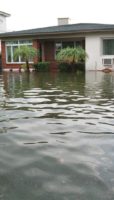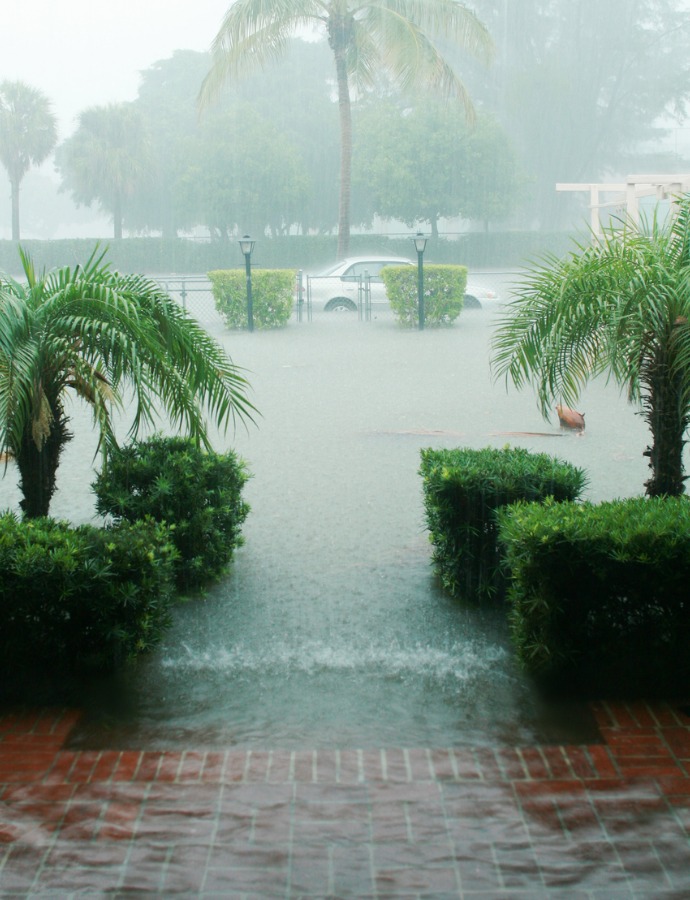Post-Storm Lawn Repair Tips for After a Hurricane
South Florida approaches hurricane season once again. Year after year, the area faces potential ravage as a result of hurricanes and tropical storms leaving significant amounts of damage in their wake.
Once the storm is over, homeowners must step outside from their domiciles to face the outdoor damage, commencing post-storm property cleanup. For this reason, Landscaping by Steve Blaum is outlining some lawn repair tips for after a hurricane.
Evaluation
Addressing the landscape after a storm is an obvious first step. One of the biggest problems South Florida faces as a whole is flooding. This takes place after moderate storms, let alone the notable deluge that stems from a combination of consistent rains and storm surge.
Flooding in Florida typically involves storm surge sending saltwater into area lawns. The saltwater then saturates the soil, potentially removing water from the roots of grass and other plants.
To prevent future damage, property owners should remove soaked debris and silt from the lawn, washing it with fresh, clean water. The freshwater helps remove some of the salt, helping the plants return to a former health level.
Mulch Removal
The next entry on our lawn repair tips for after a hurricane is removing mulch from flooded and saturated areas. The flooding in a homeowner’s yard will appear obvious with standing water visibly apparent on the landscape.
Nevertheless, saturation in plants and areas like home gardens may not seem as evident. Removing mulch around trees and plants and replacing it with fresh, dry mulch will help prevent unwanted saltwater exposure.
Replant Some Garden Fixtures
After a storm, the last thing anyone wants to do is remove and relocate plants and trees that remained fixtures on the property for some time. Hurricanes may inevitably destroy some plants and other parts of a lawn.
Replanting is ideal after a hurricane. However, you must analyze your soil quality first. Adding new plants to a soil that remains saturated with saltwater will provide a costly mistake. The plants will die. For this reason, ensure the salt water isn’t present in the soil before replanting trees, flowers, etc.
Rake Up and Remove Landscape Debris
Landscape debris removal is essential to help a lawn recuperate after severe storms. Moisture from leaves, branches, and twigs left on the lawn can contribute to diseases and other conditions like Bipolaris.
As summer turns to winter, this is an opportune time to add the debris to fire, setting twigs aside as a fire starter. If a lawn possesses a compost pile, the debris makes for ideal composting material as well.
Pruning and Removing Damage
After dealing with the damage on the ground level, the last of our lawn repair tips for after a hurricane involves moving onto the tree line. Pruning and removing snapped, bent, and damaged growth is the best way to mitigate risks for secondary infection caused by dead plant material.
Homeowners should trim trees slowly, doing the least amount as necessary. Over time, the plants will form new shoots and develop new buds. These serve as insights on how the plants do after severe storms.
Lawn Care Tips for After a Hurricane from Landscaping by Steve Blaum
 Remaining flexible and adaptable is essential following a storm. After all, there is no telling what type of damage, or even how damage will appear after a significant storm like a Florida hurricane.
Remaining flexible and adaptable is essential following a storm. After all, there is no telling what type of damage, or even how damage will appear after a significant storm like a Florida hurricane.
To learn more about our lawn care tips for after a hurricane and how Landscaping by Steve Blaum can help you recuperate, contact our professional and dedicated team today!

